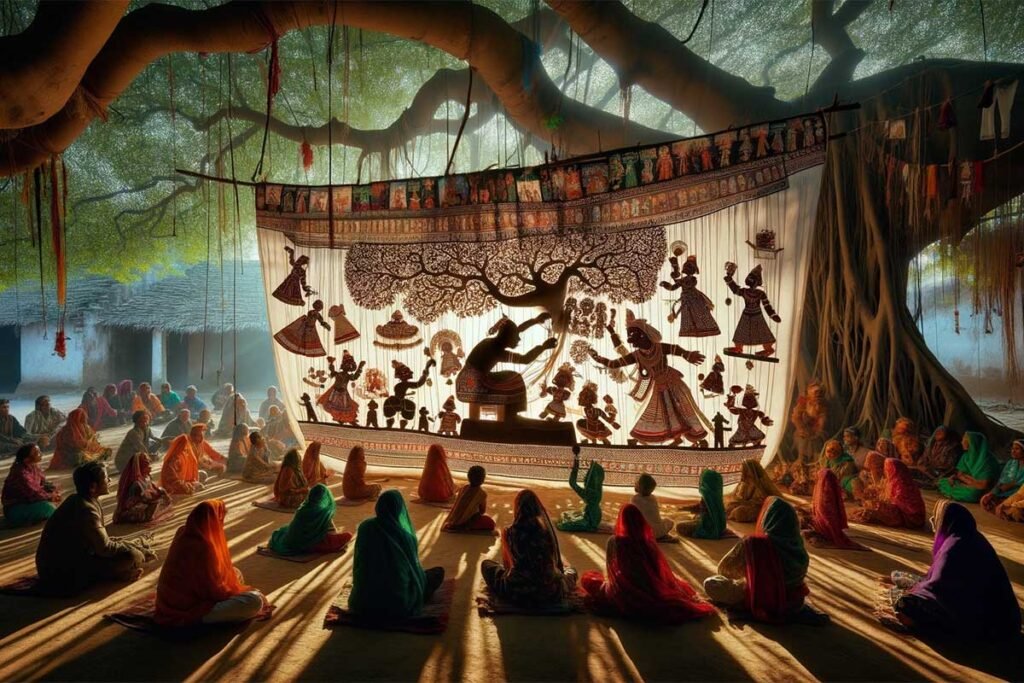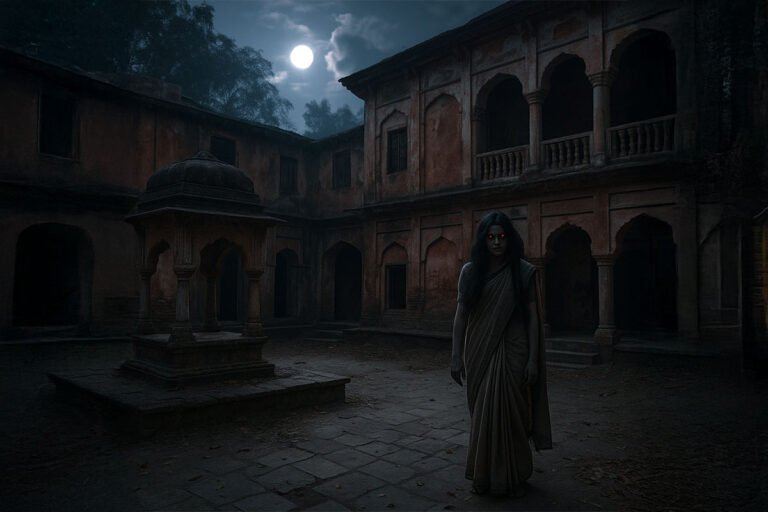In the artist village of Raghurajpur, where every lane echoed with the sound of creativity, and every wall was a canvas of vibrant colors, lived a shadow puppeteer named Devadas. He was known for his captivating performances under the banyan tree at the village square, where his intricately crafted puppets danced behind a white cloth screen, casting mesmerizing shadows in the flickering lamp light.
Devadas’s life changed the day he discovered a hidden talent. While narrating a tale of a brave warrior, he noticed his puppet moving without his guidance, enacting the story with astonishing precision. Amazed and curious, he experimented further and found that his stories could bring his puppets to life. They moved with his words, their shadows playing out his tales in vivid detail.
News of this magical spectacle spread like wildfire, and soon people from neighboring villages flocked to see Devadas’s shows. The puppets, infused with life, started to mirror the characters they portrayed – a king, a farmer, a mighty bird, and a wise sage. Each character held a unique allure, and the villagers were enraptured.
But as time passed, a strange occurrence began to unfold. The villagers started to experience changes in their lives that eerily mirrored the stories told by Devadas. A farmer, inspired by the puppet sage’s wisdom, revolutionized his farming techniques, while a young boy, emulating the brave warrior, fearlessly protected the village from wild animals.
At first, this phenomenon brought joy and prosperity to Raghurajpur. However, it soon spiraled beyond Devadas’s intentions. The villagers, influenced by the puppet stories, began to lose their essence, becoming mere reflections of the characters. The uniqueness that made each villager special started fading away, replaced by the traits of the shadow puppets.
Devadas, realizing the unintended consequences of his gift, was torn. His newfound power had brought him fame and admiration, but it was altering the fabric of his community. The once harmonious village was now a place where individuality was being overshadowed by the narratives he wove.
In a moment of introspection under the banyan tree, Devadas made a decision. At his next performance, the village gathered, anticipating another mesmerizing tale. Devadas, with a calm resolve, began a story unlike any other. This tale was not of heroes and kings but of a mirror that showed not one’s face but one’s true self. Each puppet, from the mighty warrior to the wise sage, peered into the mirror, only to find themselves lost, their reflections empty. The story unfolded, leading each character on a journey of self-discovery, learning to embrace their unique qualities and break free from the confines of the mirror.
As the tale reached its crescendo, a transformation swept across the audience. The villagers, touched by the narrative, began to awaken from their trance. They realized the richness of their own identities, rediscovering the joy in their individual quirks and talents.
The spell was broken. The puppets returned to their inanimate state, and the magic seemed to vanish. But in truth, a deeper magic had taken its place – the magic of self-realization and the celebration of diversity.
Devadas continued to enthrall his audience with his stories, but now he was mindful of the impact his tales could have. The village of Raghurajpur returned to its vibrant self, with each individual contributing their unique colors to the tapestry of the community.
The story of the Shadow Puppeteer of Raghurajpur became a legend, a poignant reminder of the power of stories and the importance of cherishing and preserving one’s identity in a world where influences are many. Devadas’s shows remained a beloved tradition, a tribute to the magic of storytelling and the enduring spirit of individuality.








